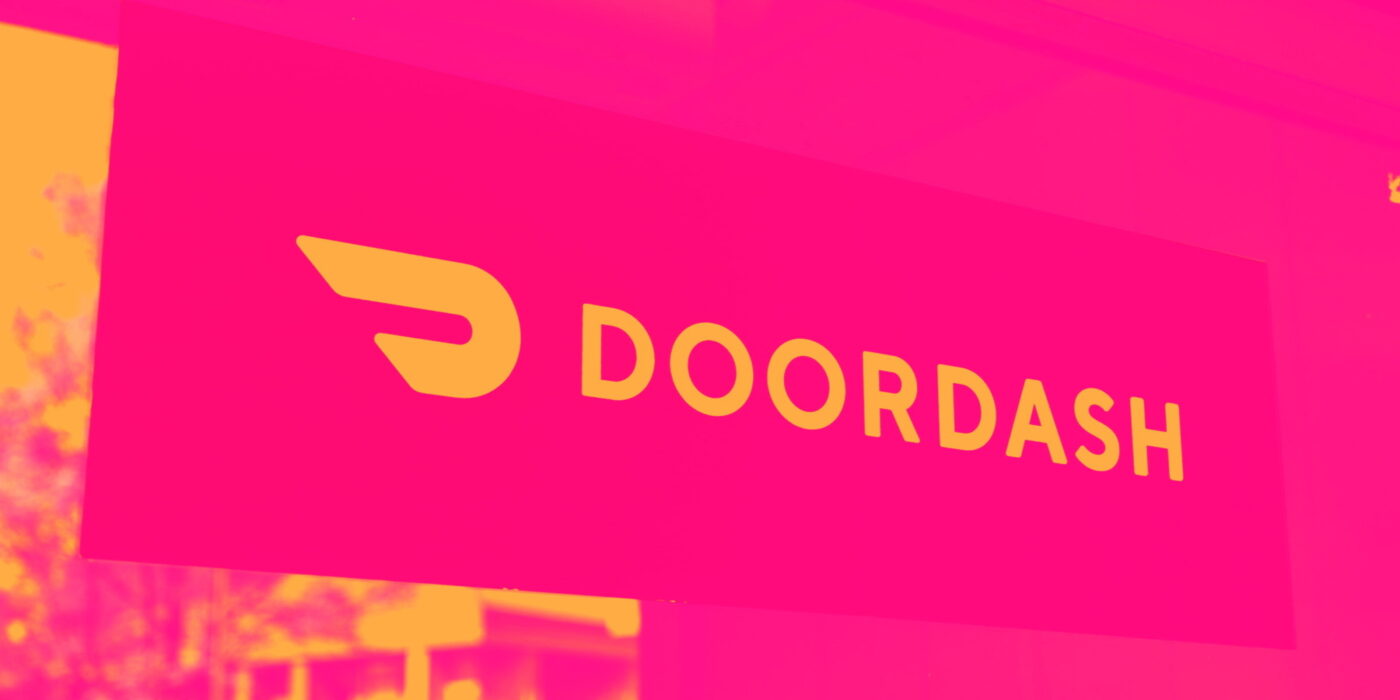On-demand food delivery service DoorDash (NYSE:DASH) announced better-than-expected results in Q1 CY2024, with revenue up 23.5% year on year to $2.51 billion. It made a GAAP loss of $0.06 per share, improving from its loss of $0.41 per share in the same quarter last year.
DoorDash (DASH) Q1 CY2024 Highlights:
- Revenue: $2.51 billion vs analyst estimates of $2.45 billion (2.5% beat)
- Adjusted EBITDA: $371 million vs analyst estimates of $365 million (1.6% beat)
- Adjusted EBITDA guidance for Q2 2024: $375 million vs analyst estimates of $390 million (3.8% miss)
- EPS: -$0.06 vs analyst expectations of -$0.05 ($0.11 miss)
- Gross Margin (GAAP): 47.1%, in line with the same quarter last year
- Free Cash Flow of $487 million, up 22.4% from the previous quarter
- Orders: 620 million vs analyst expectations of 606.5 million (2.2% beat)
- Market Capitalization: $52.22 billion
Founded by Stanford students with the intent to build “the local, on-demand FedEx", DoorDash (NYSE:DASH) operates an on-demand food delivery platform.
The company's main product is a mobile application that allows customers to order food from restaurants and have it delivered to their doorstep. Called Marketplace, this platform involves 3 stakeholders: the consumer, the merchant (the restaurant), and the Dasher (the delivery person).
For consumers, DoorDash enables digital ordering that is convenient and addresses the errors that can occur when ordering by phone. For merchants, DoorDash expands the addressable market through efficient customer acquisition. Online ordering has been shown to increase retention and the ability to press “reorder” can remove decision paralysis.
DoorDash generates revenue by charging restaurants a commission for each order on the platform. The company also charges customers a delivery fee and may impose other fees.
The company has also introduced new products to cover different use cases for restaurants that may have their own ordering platforms or want to brand a white-label service. For consumers, DoorDash has the DashPass, which is a subscription product with free unlimited delivery and other perks that aim to increase ordering frequency and eliminate the pesky delivery fees that give users pause.
Gig Economy
The iPhone changed the world, ushering in the era of the “always-on” internet and “on-demand” services - anything someone could want is just a few taps away. Likewise, the gig economy sprang up in a similar fashion, with a proliferation of tech-enabled freelance labor marketplaces, which work hand and hand with many on demand services. Individuals can now work on demand too. What began with tech enabled platforms that aggregated riders and drivers has expanded over the past decade to include food delivery, groceries, and now even a plumber or graphic designer are all just a few taps away.
DoorDash competes in food delivery with UberEats (owned by Uber, NYSE:UBER), Just Eat Takeaway (ENXTAM:TKWY), and Delivery Hero (XTRA:DHER).
Sales Growth
DoorDash's revenue growth over the last three years has been very strong, averaging 37.5% annually. This quarter, DoorDash beat analysts' estimates and reported decent 23.5% year-on-year revenue growth.
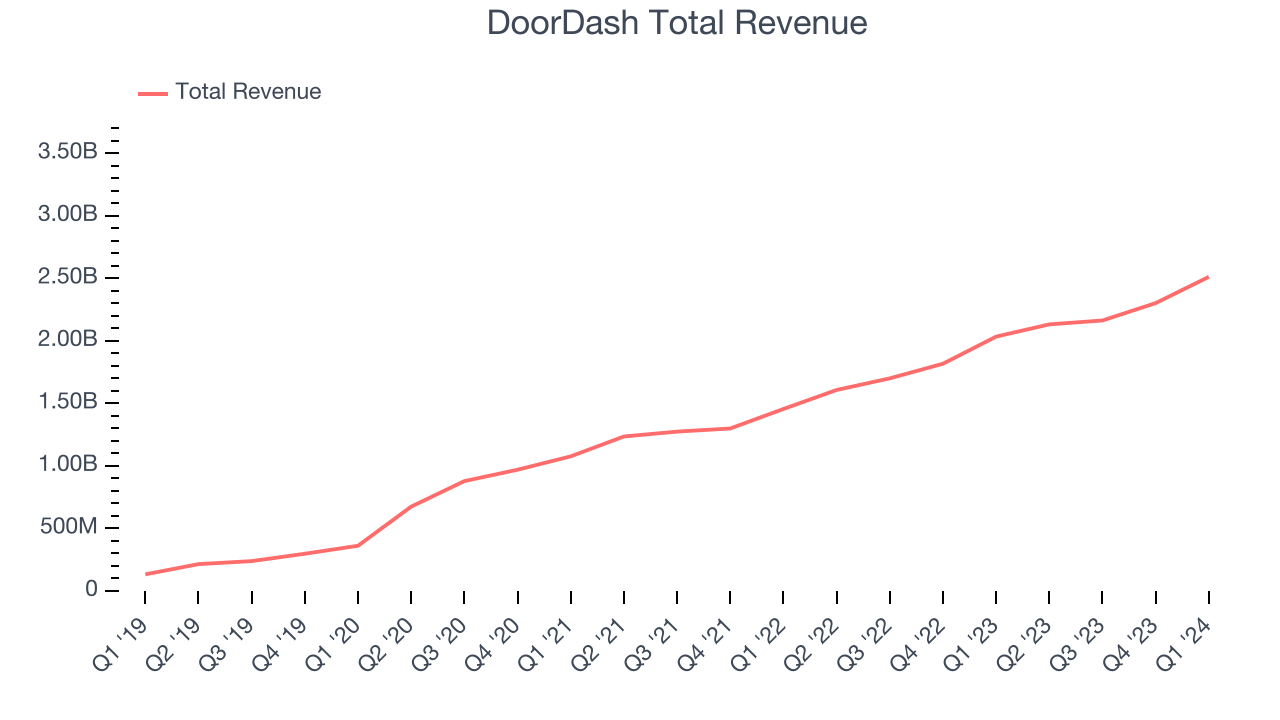
Ahead of the earnings results, analysts were projecting sales to grow 16.3% over the next 12 months.
Revenue Per Request
Average revenue per request (ARPR) is a critical metric to track for consumer internet businesses like DoorDash because it measures how much the company earns in transaction fees from each request. This number also informs us about DoorDash's take rate, which represents its pricing leverage over the ecosystem, or "cut" from each transaction.
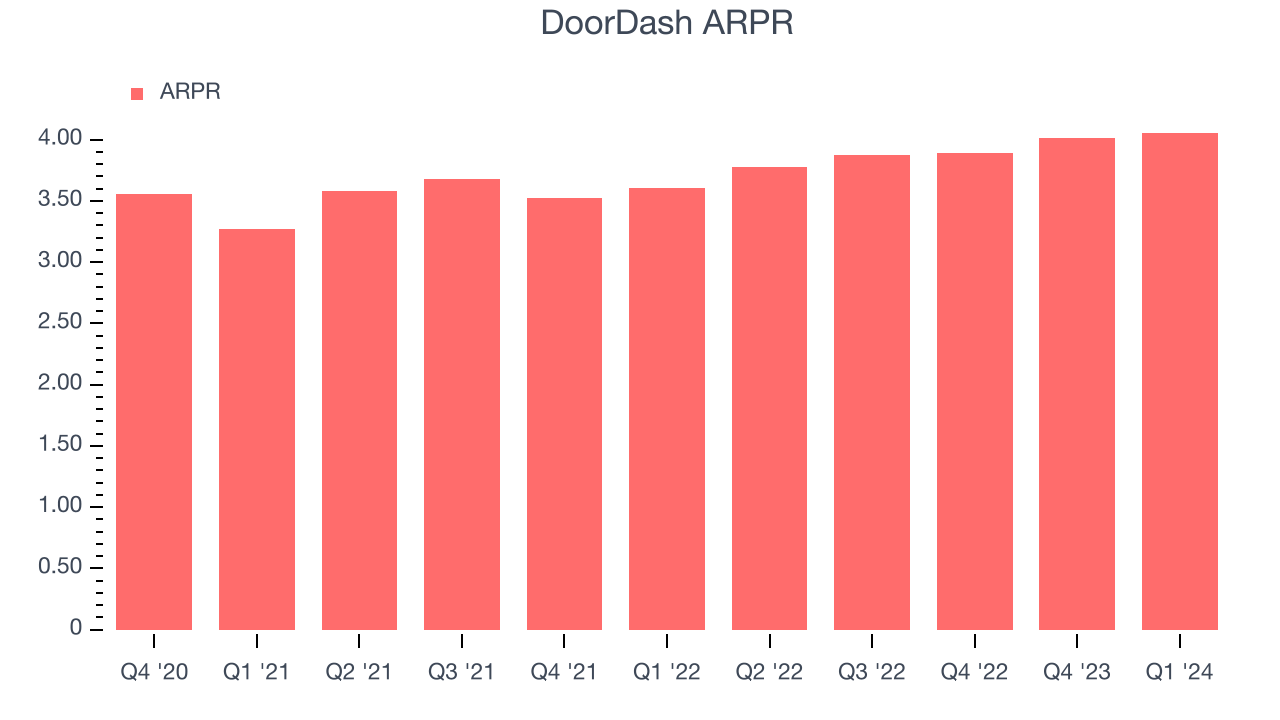
DoorDash's ARPR growth has been decent over the last two years, averaging 6.1%. The company's ability to increase prices while constantly growing its service requests demonstrates the value of its platform. This quarter, ARPR declined NaN% year on year to $4.05 per request.
Pricing Power
A company's gross profit margin has a major impact on its ability to exert pricing power, develop new products, and invest in marketing. These factors may ultimately determine the winner in a competitive market, making it a critical metric to track for the long-term investor.
DoorDash's gross profit margin, which tells us how much money the company gets to keep after covering the base cost of its products and services, came in at 47.1% this quarter, down 0.4 percentage points year on year.
For gig economy businesses like DoorDash, these aforementioned costs typically include server hosting, customer support, and payment processing fees. Another cost of revenue could also be insurance to protect against liabilities arising from providing transportation, housing, or freelance work services. After paying for these expenses, DoorDash had $0.47 for every $1 in revenue to invest in marketing, talent, and the development of new products and services.
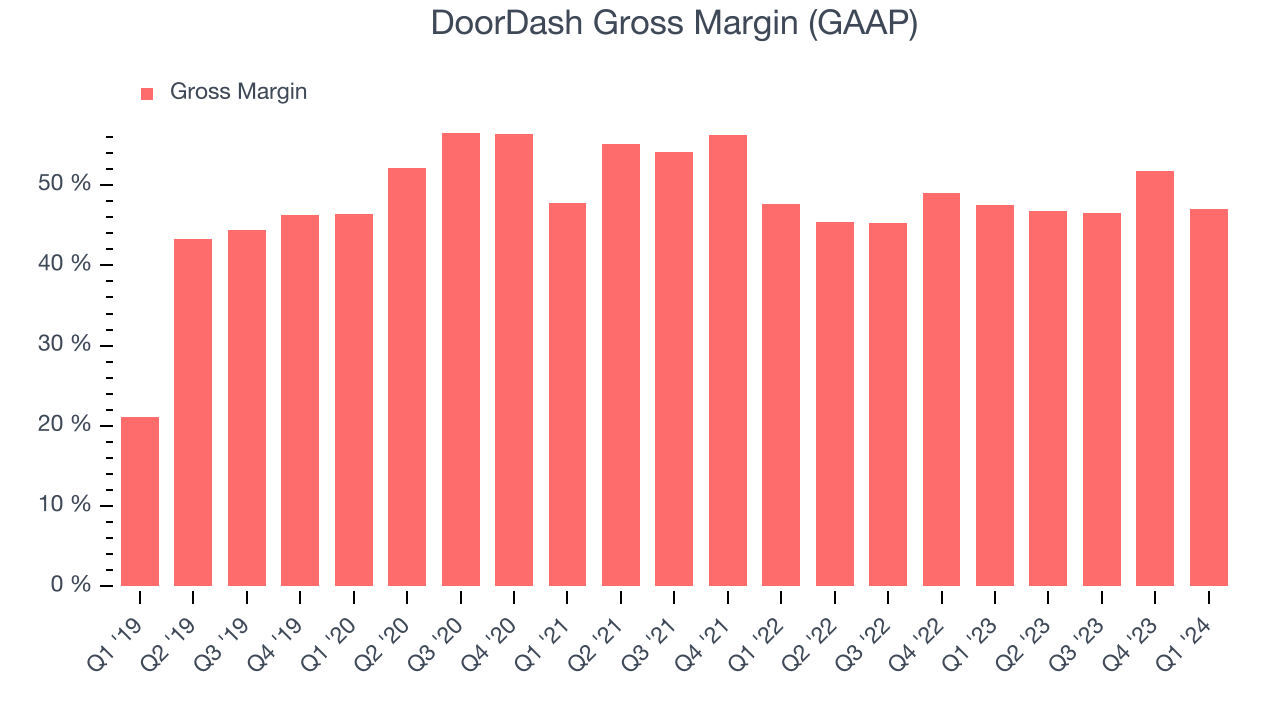
DoorDash's gross margins have been trending up over the past year, averaging 48.1%. This is a welcome development, as DoorDash's margins are slightly below the peer group average and rising margins could suggest improved demand and pricing power.
User Acquisition Efficiency
Consumer internet businesses like DoorDash grow from a combination of product virality, paid advertisement, and incentives (unlike enterprise software products, which are often sold by dedicated sales teams).
DoorDash is efficient at acquiring new users, spending 43.1% of its gross profit on sales and marketing expenses over the last year. This level of efficiency indicates relatively solid competitive positioning, giving DoorDash the freedom to invest its resources into new growth initiatives.
Profitability & Free Cash Flow
Investors frequently analyze operating income to understand a business's core profitability. Similar to operating income, adjusted EBITDA is the most common profitability metric for consumer internet companies because it removes various one-time or non-cash expenses, offering a more normalized view of a company's profit potential.
This quarter, DoorDash's EBITDA came in at $371 million, resulting in a 14.8% margin. The company has also shown above-average profitability for a consumer internet business over the last four quarters, with average EBITDA margins of 14.9%.
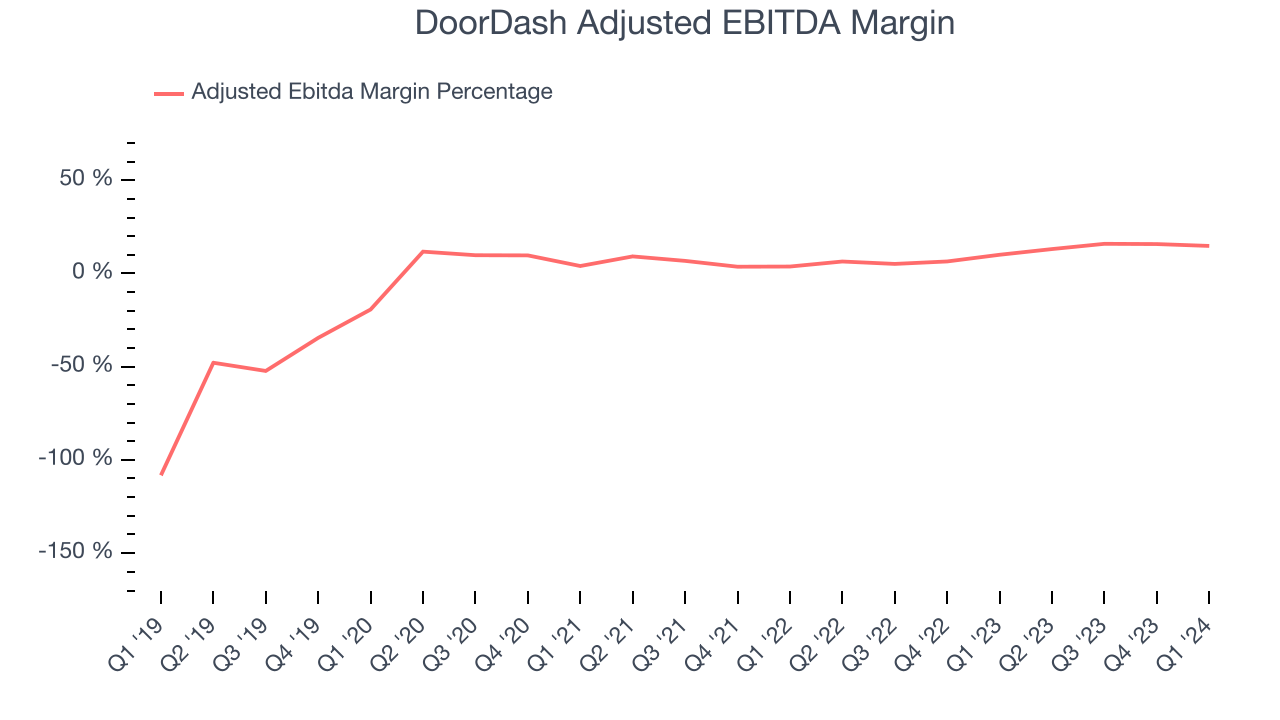
If you've followed StockStory for a while, you know that we emphasize free cash flow. Why, you ask? We believe that in the end, cash is king, and you can't use accounting profits to pay the bills. DoorDash's free cash flow came in at $487 million in Q1, up 54.1% year on year.
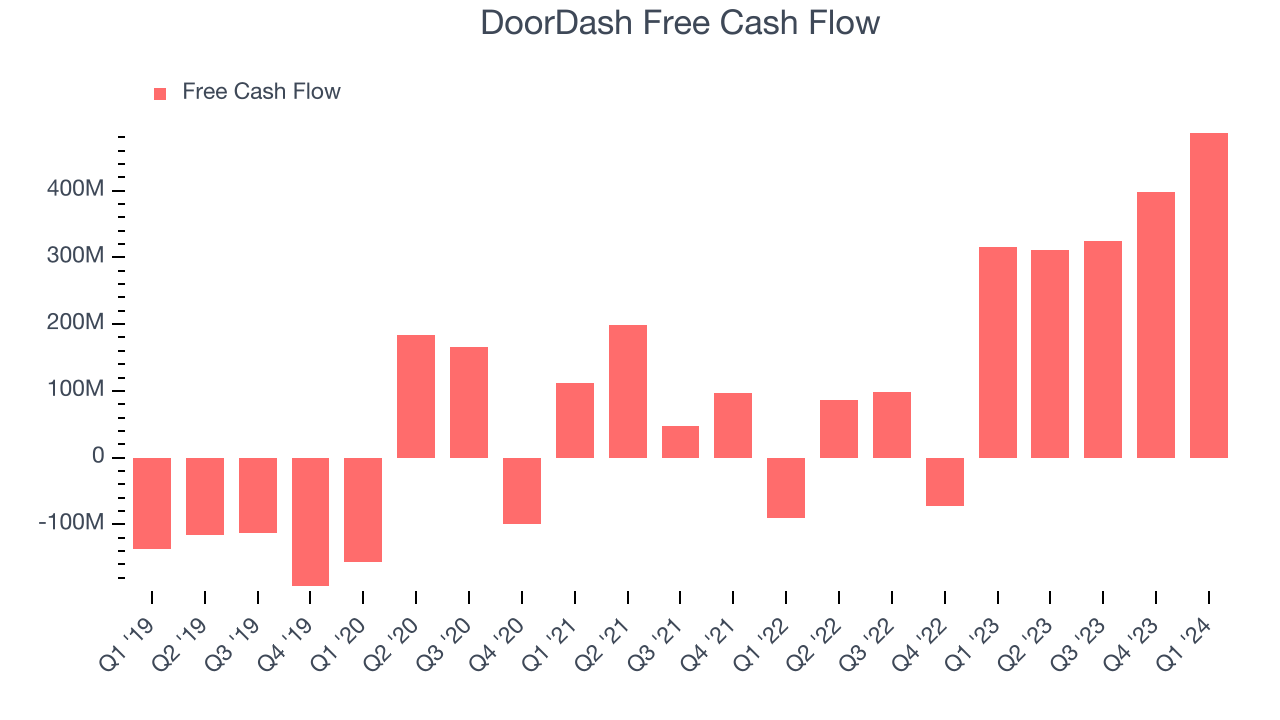
DoorDash has generated $1.52 billion in free cash flow over the last 12 months, an impressive 16.7% of revenue. This high FCF margin stems from its asset-lite business model and strong competitive positioning, giving it the option to return capital to shareholders or reinvest in its business while maintaining a cash cushion.
Balance Sheet Risk
As long-term investors, the risk we care most about is the permanent loss of capital. This can happen when a company goes bankrupt or raises money from a disadvantaged position and is separate from short-term stock price volatility, which we are much less bothered by.
DoorDash is a well-capitalized company with $4.49 billion of cash and $547 million of debt, meaning it could pay back all its debt tomorrow and still have $3.94 billion of cash on its balance sheet. This net cash position gives DoorDash the freedom to raise more debt, return capital to shareholders, or invest in growth initiatives.
Key Takeaways from DoorDash's Q1 Results
It was great to see DoorDash beat analysts' revenue and adjusted EBITDA expectations this quarter. We were also glad it produced solid revenue growth. On the other hand, next quarter's Maketplace GOV (gross order value) guidance was just in line and adjusted EBITDA guidance missed. Overall, this quarter's results seemed fairly positive but the outlook was less exciting, which for a growth stock at a premium valuation can spell trouble. The market was expecting more from the guide, and the stock is down 12.4% after reporting, trading at $111.53 per share.
Is Now The Time?
When considering an investment in DoorDash, investors should take into account its valuation and business qualities as well as what's happened in the latest quarter.
We think DoorDash is a good business. We'd expect growth rates to moderate from here, but its revenue growth has been impressive over the last three years. And while its gross margins indicate a disadvantaged starting point for the overall profitability of the business, the good news is its growth in service requests has been strong. On top of that, its strong free cash flow generation allows it to invest in growth initiatives while maintaining an ample cash cushion.
At the moment, DoorDash trades at 27.6x next 12 months EV-to-EBITDA. There are definitely things to like about DoorDash and there's no doubt it's a bit of a market darling, at least for some. But when considering the company against the backdrop of the consumer internet landscape, it seems there's a lot of optimism already priced in. We wonder whether there might be better opportunities elsewhere right now.
Wall Street analysts covering the company had a one-year price target of $136.71 per share right before these results (compared to the current share price of $111.53).
To get the best start with StockStory check out our most recent Stock picks, and then sign up to our earnings alerts by adding companies to your watchlist here. We typically have the quarterly earnings results analyzed within seconds of the data being released, and especially for the companies reporting pre-market, this often gives investors the chance to react to the results before the market has fully absorbed the information.
